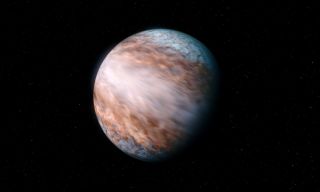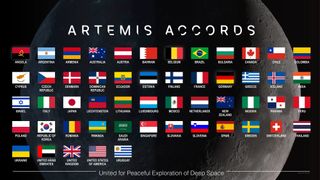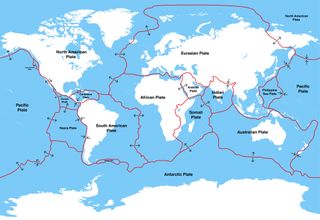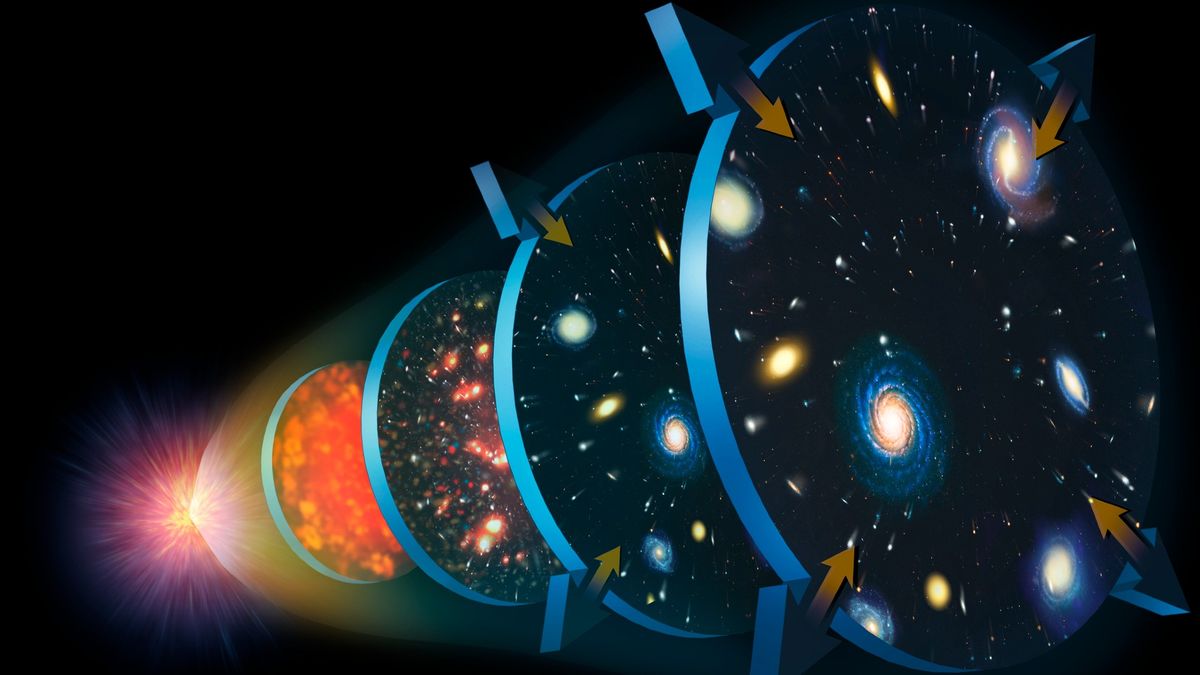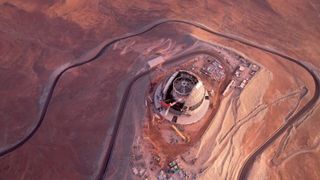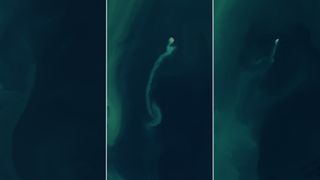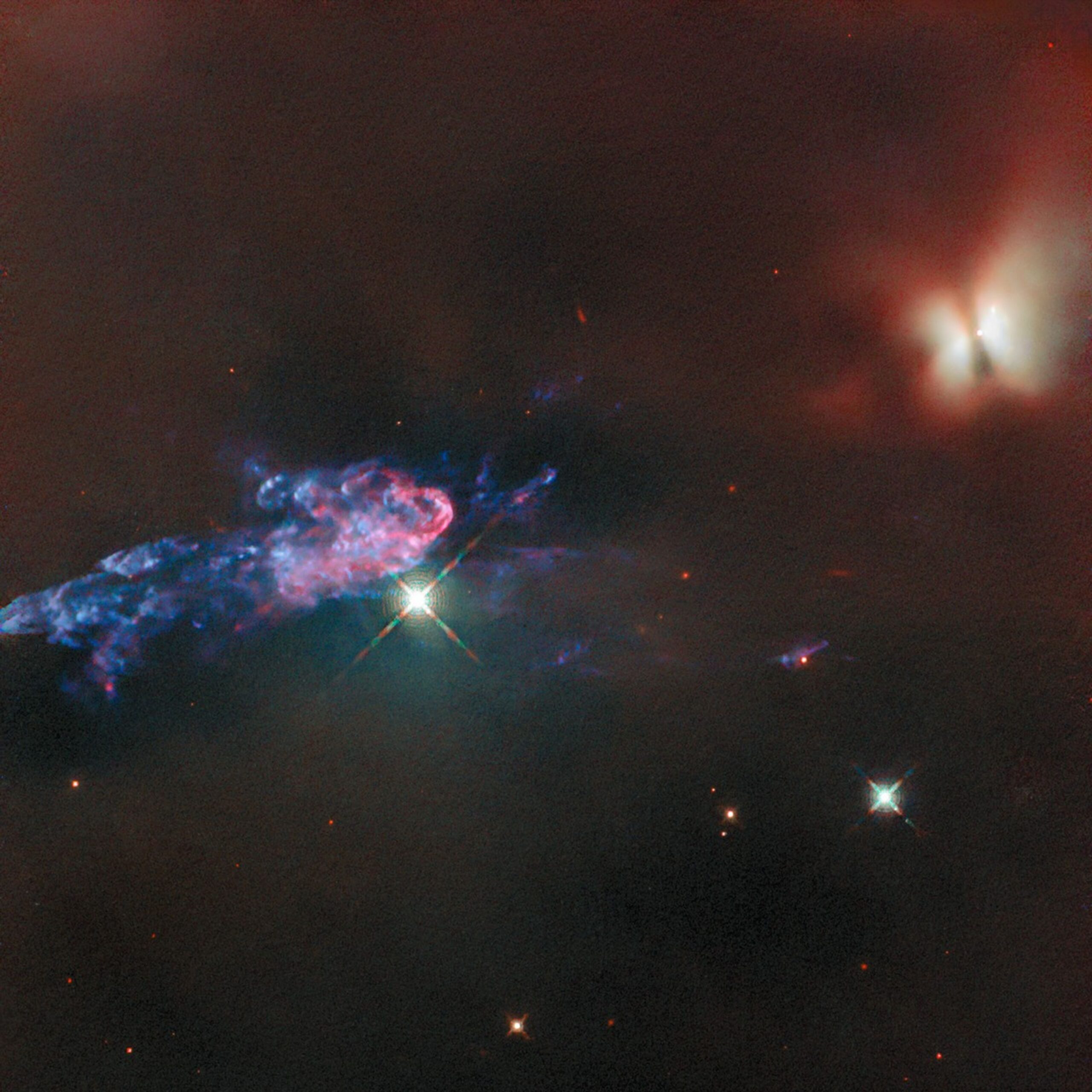Shining loops of plasma on the surface of the sun “flicker” hours before they unleash potentially dangerous solar flares, a new study shows. The new findings could help create more reliable space weather forecasts, researchers say. Solar flares are violent outbursts of electromagnetic radiation that shoot from the sun when invisible magnetic field lines at the sun’s surface get twisted up until they eventually snap. These outbursts most commonly occur around sunspots — dark patches where magnetic field lines poke through our home star’s surface — and often pull up…
Read MoreTag: The Universe
Scientists discover exoplanet with supersonic winds — the fastest in the known universe
Astronomers have found winds on a distant world that blow at a phenomenal 5.6 miles per second (9 kilometers per second), or 20,500 miles per hour (33,000 kilometers per hour) — the fastest winds ever measured on a planet. The faraway world, a gas giant called WASP-127b that was discovered in 2016, orbits a star 520 light-years from Earth. It zips around its host star in just four days, following a slightly skewed orbit. The exoplanet is also likely tidally locked to its star the same way the moon is…
Read MoreStrange ‘quasi-moon’ of Earth gets named Cardea, after goddess of door hinges
Until we live in a world based purely on sliding doors, door hinges will remain some of the most unsung heroes of our society. We’d still be able to saunter through door frames, sure, but nothing would so seamlessly connect the place we once were with the place we are going. On a metaphorical level, door hinges represent an intermediate state we use to move back and forth, and decide when to lock ourselves in the locations of here or there. It is thus only fitting for a goddess to…
Read MoreEarth’s elusive ‘ignorosphere’ could shed new light on auroras
Japanese scientists have created the first-ever long-term dataset about Earth’s entire atmosphere, stretching all the way to space. They hope the project will help shed light on some little-explored processes taking place inside our planet’s gaseous shroud, including the magnificent northern lights. Some parts of Earth’s atmosphere are studied continuously in incredible detail. For example, millions of weather stations all around the world, hundreds of meteorological balloons and countless airplanes provide daily measurements of the entire troposphere, the atmosphere’s lowest region. The balloons also reach the lower part of the…
Read MoreFinland becomes 53rd country to join the Artemis Accords for moon exploration
The Artemis Accords has just gained its 53rd member nation, bolstering NASA’s efforts to establish peaceful and cooperative international space exploration. Finland joined NASA’s Artemis Accords on Jan. 21 through a signing ceremony that took place on the sidelines of the Winter Satellite Workshop 2025 in Espoo, Finland. The signing makes the Nordic country the latest to commit to the safe and responsible exploration of space that benefits humanity, according to a NASA statement. “Finland has been part of the space exploration community for decades with Finnish companies and research…
Read MoreScientists discover ‘sunken worlds’ hidden deep within Earth’s mantle that shouldn’t be there
Potential patches of Earth’s ancient crust, sometimes called “sunken worlds,” may have just been discovered deep within the mantle, thanks to a new way of mapping the inside of our planet. However, these mysterious blobs appear in places they should not, leaving researchers scratching their heads. For decades, scientists have been building up a better picture of Earth’s interior by using seismographs — 3D images created by measuring how seismic waves from earthquakes reverberate deep within our planet. This method has helped scientists identify ancient sections of the planet’s crust,…
Read MoreHow ‘quantum foam’ may have inflated the early universe
The early universe experienced a phase of rapid expansion, known as inflation. For decades, cosmologists assumed that this expansion was powered by a new entity in the universe, known as the inflaton. But new research suggests that it may have been possible to inflate the universe without anything new powering that inflation. In the 1970s, physicist Alan Guth concocted a radical picture of the extremely early universe. Originally intending to solve some troublesome properties exhibited by the high-energy physics in the young, dense, hot universe, he conceived of a model…
Read MoreWorld’s largest telescope gets its protective shell (photos)
The frame of the dome that will house the world’s largest telescope has been completed, marking another key milestone in the observatory’s construction. The European Southern Observatory’s (ESO) Extremely Large Telescope (ELT) — the world’s largest visible- and infrared-light telescope — is currently under development on the Cerro Armazones mountain in Chile’s Atacama Desert. The mighty telescope is expected to see its “first light” by 2028. New photos from the ESO show that the dome’s frame is now completed, while the outer shell that will fully enclose the telescope is…
Read MoreSatellites watch ‘ghost island’ solidify in the Caspian Sea before disappearing (photos)
We like to think of land as a fairly static thing, considering that’s where we spend the majority of our lives. And to think that the ground is ever-changing, well, that’s a bit unsettling. But the reality is land is always changing — perhaps nowhere more so than at the Kumani Bank mud volcano, also known as Chigil-Deniz, some 15 miles (25 km) off the coast of Azerbaijan in the Caspian Sea. The NASA Earth Observatory has released a series of images taken with the Operational Land Imager (OLI) and…
Read MoreHubble Captures Young Stars Changing Their Environments
Hubble Space Telescope Hubble Home Overview About Hubble The History of Hubble Hubble Timeline Why Have a Telescope in Space? Hubble by the Numbers At the Museum FAQs Impact & Benefits Hubble’s Impact & Benefits Science Impacts Cultural Impact Technology Benefits Impact on Human Spaceflight Astro Community Impacts Science Hubble Science Science Themes Science Highlights Science Behind Discoveries Hubble’s Partners in Science Universe Uncovered Explore the Night Sky Observatory Hubble Observatory Hubble Design Mission Operations Missions to Hubble Hubble vs Webb Team Hubble Team Career Aspirations Hubble Astronauts News Hubble…
Read More
